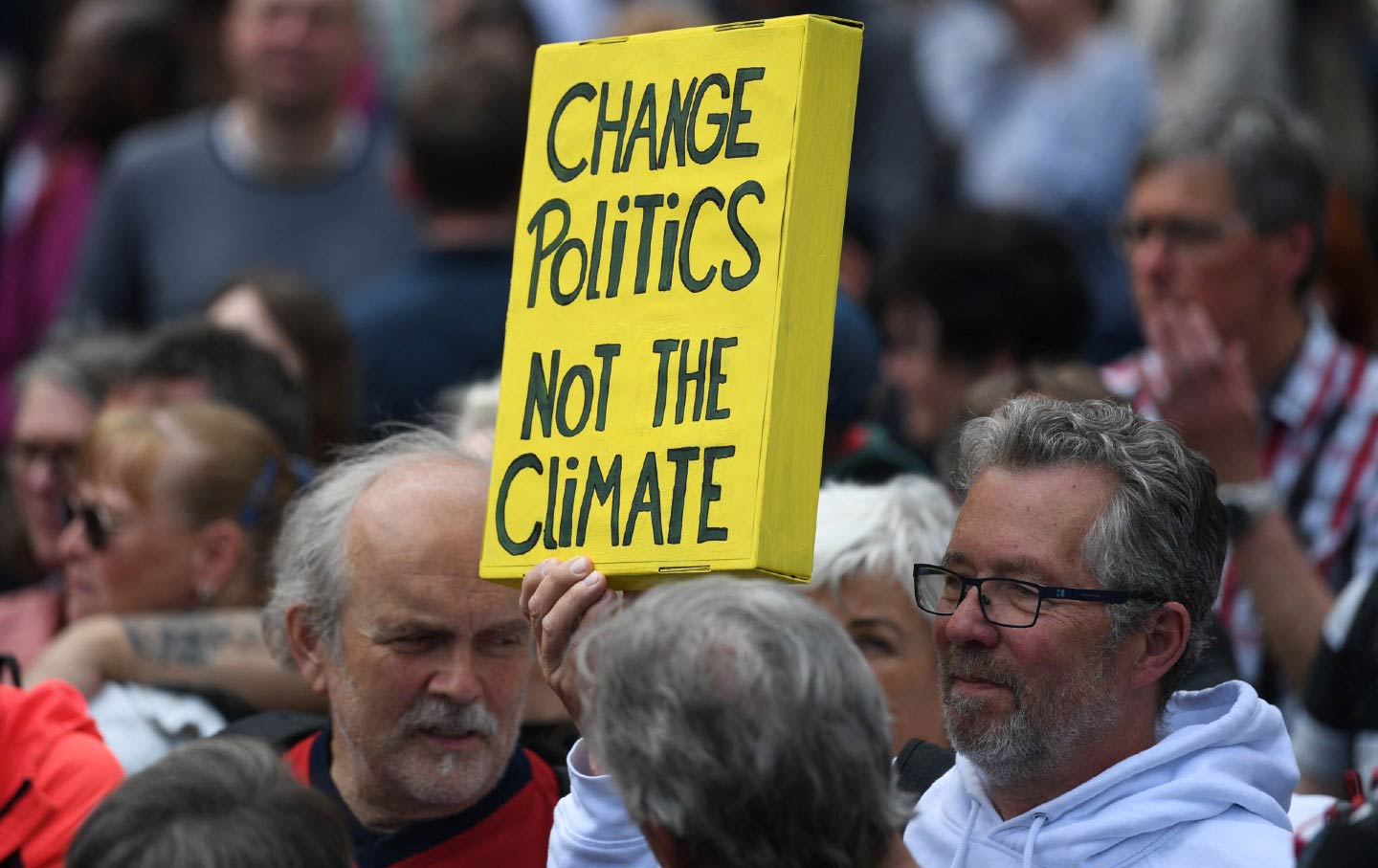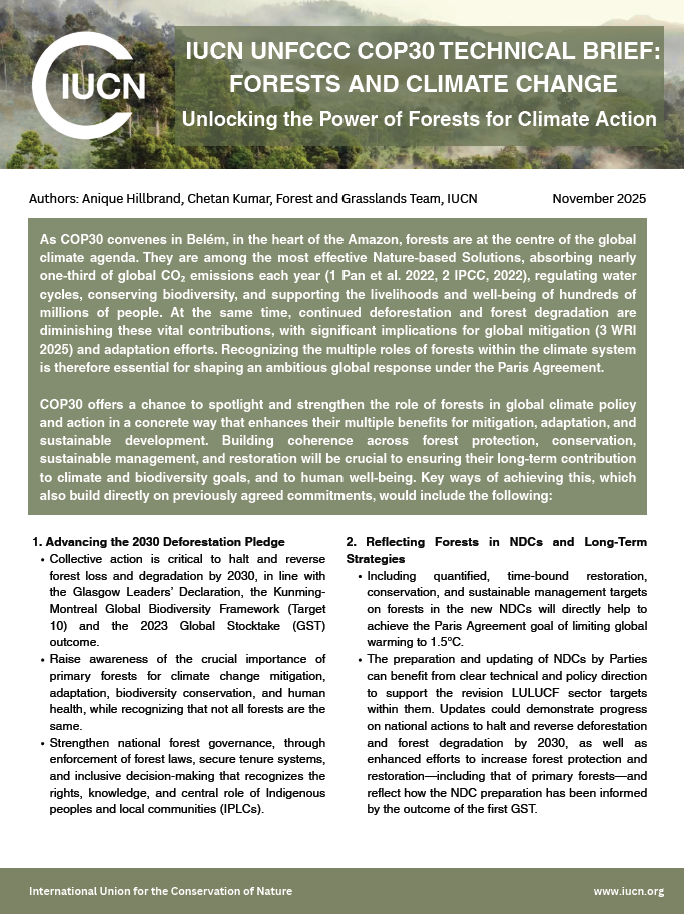‘Profound concern’ as scientists say extreme heat ‘now the norm’ in UK – The Guardian

Report on the State of the UK Climate and Implications for Sustainable Development Goals
A comprehensive analysis based on data from UK weather stations indicates that record-breaking extreme weather is now a standard feature of the nation’s climate. These findings highlight a significant climate crisis, posing direct challenges to the United Kingdom’s progress towards several United Nations Sustainable Development Goals (SDGs).
1. Escalating Climate Extremes: A Direct Challenge to SDG 13 (Climate Action)
The “State of the UK Climate 2024” report, published in the International Journal of Climatology, provides clear evidence of a changing climate driven by carbon pollution. This directly contravenes the objectives of SDG 13 (Climate Action), which calls for urgent measures to combat climate change and its impacts.
- Temperature Anomalies: The frequency of days with temperatures significantly above the 1961-1990 average has dramatically increased. Over the last decade, the number of days with temperatures 5°C above average has doubled, days 8°C above average has trebled, and days 10°C above average has quadrupled.
- Record Heat: The last three years are among the UK’s top five hottest on record, with current high temperatures projected to be considered average by 2050.
- Increased Precipitation: The intensity of rainfall has risen, with the number of months where counties receive at least double the average rainfall increasing by 50% in the last two decades. The period from October 2023 to March 2024 was the wettest since records began in 1767.
2. Impacts on Health, Infrastructure, and Communities
The observed climatic shifts have profound consequences for society, undermining key development goals related to health, infrastructure, and community resilience.
2.1 Public Health and Well-being (SDG 3)
Extreme weather events pose a significant threat to public health, challenging the core tenets of SDG 3 (Good Health and Well-being).
- A recent heatwave is estimated to have caused 600 fatalities in England and Wales.
- Scientific analysis concluded that such heatwaves have been made 100 times more likely by global heating.
- The increasing frequency of heatwaves and floods is a matter of “profound concern” for public health systems.
2.2 Sustainable Cities and Infrastructure (SDG 9 & SDG 11)
The integrity of national infrastructure and the safety of communities are at risk, highlighting a critical need to advance SDG 9 (Industry, Innovation and Infrastructure) and SDG 11 (Sustainable Cities and Communities).
- Widespread flooding in regions such as Derbyshire and the West Midlands demonstrates the vulnerability of existing infrastructure.
- Government preparations to protect citizens and infrastructure from climate impacts have been assessed by official advisers as “inadequate, piecemeal and disjointed.”
- The report serves as a “call to action” to make the UK resilient to climate-fuelled extreme weather, a foundational requirement for sustainable communities.
3. Environmental Degradation and Natural Systems
The report documents significant impacts on the UK’s marine and terrestrial environments, affecting biodiversity and natural cycles.
3.1 Life Below Water (SDG 14)
Rising sea levels threaten coastal ecosystems and communities, directly impacting the targets of SDG 14 (Life Below Water).
- Sea level around the UK has risen by 19cm over the last century, an acceleration that is faster than the global average.
- This rise exacerbates the impact of coastal flooding and storm surges, intensifying coastal hazards.
- Projections indicate a potential sea level rise of up to 200cm by the end of the century.
3.2 Life on Land (SDG 15)
The changing climate is disrupting terrestrial ecosystems, which is a core concern of SDG 15 (Life on Land).
- Phenological shifts have been observed, with record-early instances of frogspawn and blackbird nesting in 2024.
- The majority of monitored natural events, from flowering to leafing, occurred earlier than average.
- These changes create a risk of ecological desynchronization, where species dependent on others for food or pollination become misaligned.
Which SDGs are addressed or connected to the issues highlighted in the article?
-
SDG 3: Good Health and Well-being
The article directly connects extreme weather events to public health, citing that “Six hundred people are believed to have died due to the heatwave.” It also mentions that the impacts on health are of “profound concern.”
-
SDG 11: Sustainable Cities and Communities
The article discusses the impact of extreme weather on infrastructure and the functioning of society. It highlights the costly damage from floods and heatwaves and mentions the government’s “inadequate, piecemeal and disjointed” preparations for protecting communities, which relates to building resilient infrastructure and settlements.
-
SDG 13: Climate Action
This is the central theme of the article. It explicitly states that record-breaking extreme weather is a result of the “climate crisis” caused by “carbon pollution emitted by burning fossil fuels.” The entire article serves as a call to action to strengthen resilience and adapt to climate-related hazards.
-
SDG 14: Life Below Water
The article addresses this goal by reporting that the “sea level around the UK is rising faster than the global average,” which “worsens the impact of coastal flooding.” This directly relates to the health of coastal ecosystems and the hazards faced by coastal communities.
-
SDG 15: Life on Land
The article highlights how the “UK’s changed climate has also affected nature.” It provides specific examples, such as “the earliest ever frogspawn and blackbird nesting,” which indicates a disruption of terrestrial ecosystems and biodiversity due to climate change.
What specific targets under those SDGs can be identified based on the article’s content?
-
SDG 3: Good Health and Well-being
- Target 3.d: Strengthen the capacity of all countries, in particular developing countries, for early warning, risk reduction and management of national and global health risks. The article’s mention of 600 deaths from a heatwave and the condemnation of the government’s inadequate preparations highlight the need to strengthen risk reduction and management of health risks associated with climate change.
-
SDG 11: Sustainable Cities and Communities
- Target 11.5: By 2030, significantly reduce the number of deaths and the number of people affected and substantially decrease the direct economic losses relative to global gross domestic product caused by disasters, including water-related disasters, with a focus on protecting the poor and people in vulnerable situations. The article’s focus on deaths, costly damage from floods, and societal disruption directly aligns with this target.
- Target 11.b: By 2020, substantially increase the number of cities and human settlements adopting and implementing integrated policies and plans towards inclusion, resource efficiency, mitigation and adaptation to climate change, resilience to disasters. The article criticizes the UK government’s preparations as “inadequate, piecemeal and disjointed,” pointing to a failure in implementing integrated plans for climate adaptation and resilience.
-
SDG 13: Climate Action
- Target 13.1: Strengthen resilience and adaptive capacity to climate-related hazards and natural disasters in all countries. The entire article, which describes the increase in extreme weather events like heatwaves and floods, underscores the urgency of this target. The call to make the UK “resilient to climate-fuelled extreme weather” is a direct reference to this goal.
-
SDG 14: Life Below Water
- Target 14.2: By 2020, sustainably manage and protect marine and coastal ecosystems to avoid significant adverse impacts, including by strengthening their resilience, and take action for their restoration in order to achieve healthy and productive oceans. The mention of accelerating sea-level rise and the increasing “intensification of coastal hazards” relates to the protection of coastal areas.
-
SDG 15: Life on Land
- Target 15.5: Take urgent and significant action to reduce the degradation of natural habitats, halt the loss of biodiversity and, by 2020, protect and prevent the extinction of threatened species. The article’s evidence of changes in natural cycles, such as earlier frogspawning and bird nesting, points to the degradation of habitats and the risk of species getting “out of sync,” which threatens biodiversity.
Are there any indicators mentioned or implied in the article that can be used to measure progress towards the identified targets?
-
Number of deaths attributed to disasters
The article states, “Six hundred people are believed to have died due to the heatwave.” This is a direct indicator for measuring the human impact of climate-related disasters (relevant to Target 11.5 and 3.d).
-
Frequency and intensity of extreme weather events
The article provides several metrics: “the number of days with temperatures 5C above the average… had doubled”; “The number of months where counties receive at least double the average rainfall has risen by 50%.” These data points can be used as indicators to track the increasing frequency of climate-related hazards (relevant to Target 13.1).
-
Rate of sea-level rise
The article reports that “Sea level around the UK has already risen by 19cm over the last century” and that the rise is “accelerating.” This measurement is a key indicator for assessing coastal hazards and the impacts on marine ecosystems (relevant to Target 14.2).
-
Changes in phenological events
The observation of “the earliest ever frogspawn and blackbird nesting” serves as a biological indicator of climate change’s impact on ecosystems. Tracking the timing of such natural events can measure the stress on biodiversity (relevant to Target 15.5).
-
Adoption of national disaster risk reduction strategies
While not a quantitative metric, the article’s reference to the government’s preparations being “inadequate, piecemeal and disjointed” serves as a qualitative indicator of the country’s progress (or lack thereof) in implementing climate adaptation and disaster resilience strategies (relevant to Target 11.b and 13.1).
SDGs, Targets and Indicators Table
| SDGs | Targets | Indicators |
|---|---|---|
| SDG 3: Good Health and Well-being | 3.d: Strengthen capacity for early warning, risk reduction and management of health risks. | Number of deaths attributed to heatwaves (e.g., “Six hundred people are believed to have died”). |
| SDG 11: Sustainable Cities and Communities | 11.5: Significantly reduce deaths and economic losses from disasters.
11.b: Increase adoption of integrated policies for climate change adaptation and disaster resilience. |
Number of deaths from disasters.
Qualitative assessment of national adaptation plans (e.g., preparations being “inadequate, piecemeal and disjointed”). |
| SDG 13: Climate Action | 13.1: Strengthen resilience and adaptive capacity to climate-related hazards. | Frequency of extreme temperature days (e.g., “doubled in the last 10 years”).
Frequency of extreme rainfall months (e.g., “risen by 50% in the last 20 years”). |
| SDG 14: Life Below Water | 14.2: Protect and restore marine and coastal ecosystems. | Rate of sea-level rise (e.g., “risen by 19cm over the last century”). |
| SDG 15: Life on Land | 15.5: Reduce the degradation of natural habitats and halt biodiversity loss. | Changes in phenological events (e.g., “earliest ever frogspawn and blackbird nesting”). |
Source: theguardian.com

What is Your Reaction?
 Like
0
Like
0
 Dislike
0
Dislike
0
 Love
0
Love
0
 Funny
0
Funny
0
 Angry
0
Angry
0
 Sad
0
Sad
0
 Wow
0
Wow
0





































![Lancaster homeowner’s energy-efficient renovation sparks clash over historic preservation [Lancaster Watchdog] – LancasterOnline](https://bloximages.newyork1.vip.townnews.com/lancasteronline.com/content/tncms/assets/v3/editorial/9/ed/9ed03d32-c902-44d2-a461-78ad888eec38/69050b156baeb.image.png?resize=150,75#)










































